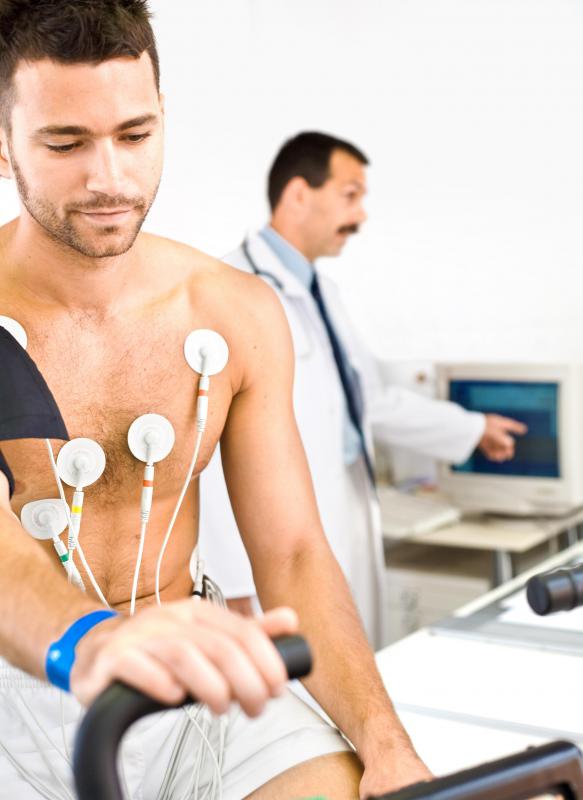At WiseGEEK, we're committed to delivering accurate, trustworthy information. Our expert-authored content is rigorously fact-checked and sourced from credible authorities. Discover how we uphold the highest standards in providing you with reliable knowledge.
What is Electrodiagnosis?
Electrodiagnosis is a medical procedure that uses an electrical stimulus to examine the body’s neurophysiology. Its main purpose is to assist medical practitioners in diagnosing muscle and nerve diseases. A number of medical procedures use electrodiagnosis to study different parts of the body. These include electromyography (EMG), electroencephalography (EEG), electrocardiography (ECG) and neurodiagnostic studies (NDS).
Medical practitioners specializing in physical medicine generally undergo electrodiagnosis training as a requirement to enable them to understand and perform the tests accurately. A physician well trained in electrodiagnosis can improve patient care by pinpointing a nerve, muscle injury, or muscle disease, which helps direct appropriate treatment and provide a more accurate diagnosis.

Neurophysiology involves the nervous and muscular system. The brain produces electrical signals that travel on the spinal cord towards the body’s extremities. At nerve endings, the electrical signal creates a chemical reaction that contracts a muscle, causing it to move.
An electrodiagnosis test works by taking advantage of the nature of neurophysiology. The test administrator applies an electrical stimulus directly to a patient’s muscles or nerves. The diagnostic equipment then interprets the response of the muscles and nerves to check for any irregularities. In this way, the doctor can determine the location of an injury, its severity, prognosis and diagnosis.

Several electrodiagnostic procedures are available to inspect specific parts of the body. Electromyography (EMG) is an electrodiagnostic method commonly used to detect muscle disorders. Disorders such as amyotrophic lateral sclerosis, myasthenia gravis and carpal tunnel syndrome are normally diagnosed through EMG.
To perform an EMG test, an external electrode sends electrical impulses to the affected muscle. Another electrode, in the form of a small needle, is then inserted in the muscle to record the neurological response. The response is appraised at different levels of muscle contraction in order to make a diagnosis.

Brain activity is analyzed through a non-invasive electrodiagnostic procedure called electroencephalography (EEG). It assists in the diagnosis of many conditions, including epilepsy, stroke and tumors. In addition, an EEG can confirm brain death in a comatose patient.
Electrodes in the form of small metal discs are placed on the patient’s scalp. The discs are attached to a machine that detects the patient’s brain waves and transforms them into information that can be interpreted by a specialist. In this procedure, the patient typically lies down and is asked not to make any sudden head movement. The test usually takes 1 to 2 hours to complete.
Heart conditions like cardiomyopathy, coronary heart disease, arrhythmias and pericarditis are diagnosed with the help of electrocardiography (ECG). The whole procedure is painless and quick and can be done anywhere an ECG machine is available. If needed, a patient can have a 24-hour reading taken to give a more detailed picture of how the heart is functioning.
In order for the reading to be taken, small electrodes are connected to a patient’s chest, wrist and ankles. These electrodes are attached with wires to the ECG machine. This records and translates the electrical impulses that occur just before the heart muscle contracts. A physician then evaluates the result to arrive at a diagnosis.
AS FEATURED ON:
AS FEATURED ON:













Discuss this Article
Post your comments